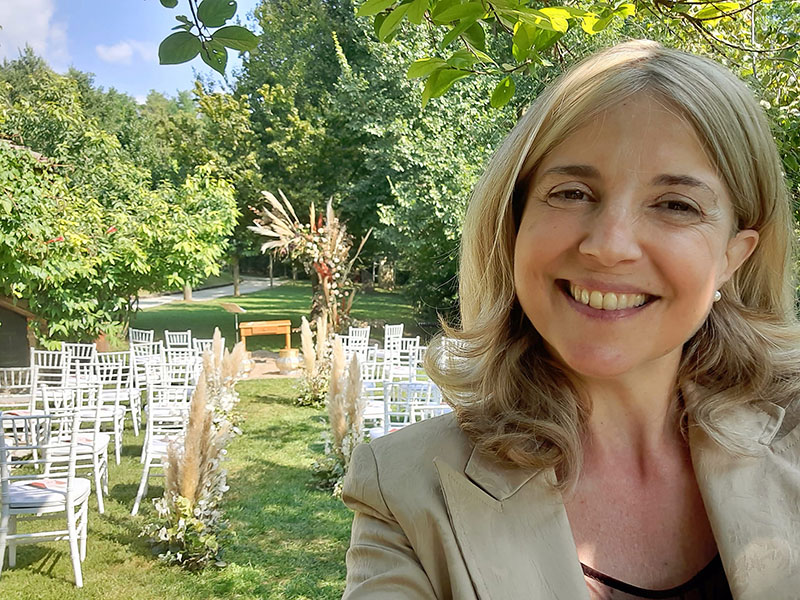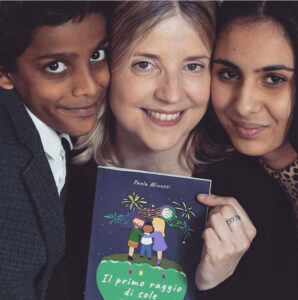Harmonizing two or more foreign languages in your wedding ceremony is a fascinating and meaningful challenge. The intersection of cultures represented by different languages can add a unique and memorable touch to your special day. Tackling this challenge requires planning, respect for traditions, and an awareness of the importance that languages play in narrating your love story. And, of course, finding the right person who can harmonize this linguistic variety in a ceremony that is not dull and disjointed but lively and engaging is the biggest challenge.
Communication!
First and foremost, it is essential to communicate clearly with your officiant or anyone involved in creating the ceremony. Express the desire to integrate multiple languages and discuss the methods of incorporation harmoniously. From my personal experience gained over years of celebrations, I can tell you that an ideal approach is to alternate languages between different sections of the ceremony, giving each one its own space.
Alternating languages
It’s useful to consider the order of languages based on the guests and families involved. For example, if there are families from different regions of the world, it might make sense to begin with the language of one spouse’s family and then switch to the other language for the next part. This will help involve all guests in the process and create an inclusive experience.
Your love story: the heart of your wedding ceremony
Incorporating the story of your relationship in different languages is a touching way to make the ceremony more personal. As an officiant, it is my care to tell your love story by alternating between languages that best express the different feelings. This not only makes the ceremony more engaging but ensures that the celebration is authentic and consistent with your cultural roots.
Engage guests as much as possible
If there are guests who do not speak any of the languages involved, it is advisable to consider providing ceremony programs or small translation devices. These tools can help guests better follow and understand the ceremony, ensuring that everyone feels included and involved.
Speeches and personal vows
Speeches and personal vows can be a significant moment to integrate languages. My advice is to have speeches or personal vows delivered in each person’s respective mother tongue. This adds a personal and engaging touch, allowing both spouses to express their vows in the way that feels most natural to them.
Music: a universal language
Music is another key element that can harmoniously unite different languages. If musicians will be performing during the ceremony, consider selecting multilingual or traditional pieces that represent both cultures. This can create a lovely atmosphere and emotionally connect guests of diverse linguistic backgrounds. And then, music is music and… it doesn’t need words.
Clear pronunciation and right rhythm
During the ceremony, it will be my responsibility to use clear pronunciation and an appropriate speech pace for both languages. This will make it easier for everyone to follow the flow of the ceremony and understand the messages clearly.
A touch of color
Adding decorative elements that represent both cultures, perhaps through colors, symbols, or traditional objects, is certainly a great idea with a strong visual impact. These details will make the ceremony visually stimulating and once again celebrate the richness of respective cultural roots.
My role as officiant
In my experience as officiant, I often unite couples from different countries, continents, with different traditions and languages. Every time is a thrilling challenge to create the right ceremony that is harmonious in every part and well-balanced in the alternation of two, or sometimes three, languages. Having been a concert musician for many years, I leverage my sensitivity and rhythmic experience to define each part and moment of the ceremony precisely and well-paced. The rhythm and cadence of different languages, alternating with music and silences during symbolic rituals, become the keystone for the success of the ceremony.
Celebrating love
Harmonizing two or more foreign languages in a wedding ceremony is a fascinating way to celebrate the diversity and love that unites different cultures. With careful planning and respect for traditions, it is possible to create an unforgettable experience that reflects the richness of a love story that transcends every language barrier.
Want a bilingual or trilingual wedding ceremony? Write to me!
Are you a couple from two different countries? Do you desire a wedding ceremony that involves relatives and friends from different places and continents, speaking different languages? Do you want a ceremony that is understandable and engaging for all guests? Send me a WhatsApp message and book your free video call. Together, we will create an unforgettable wedding ceremony that is understandable and engaging for everyone.
I am a native Italian speaker and speak English, German, and Portuguese.




